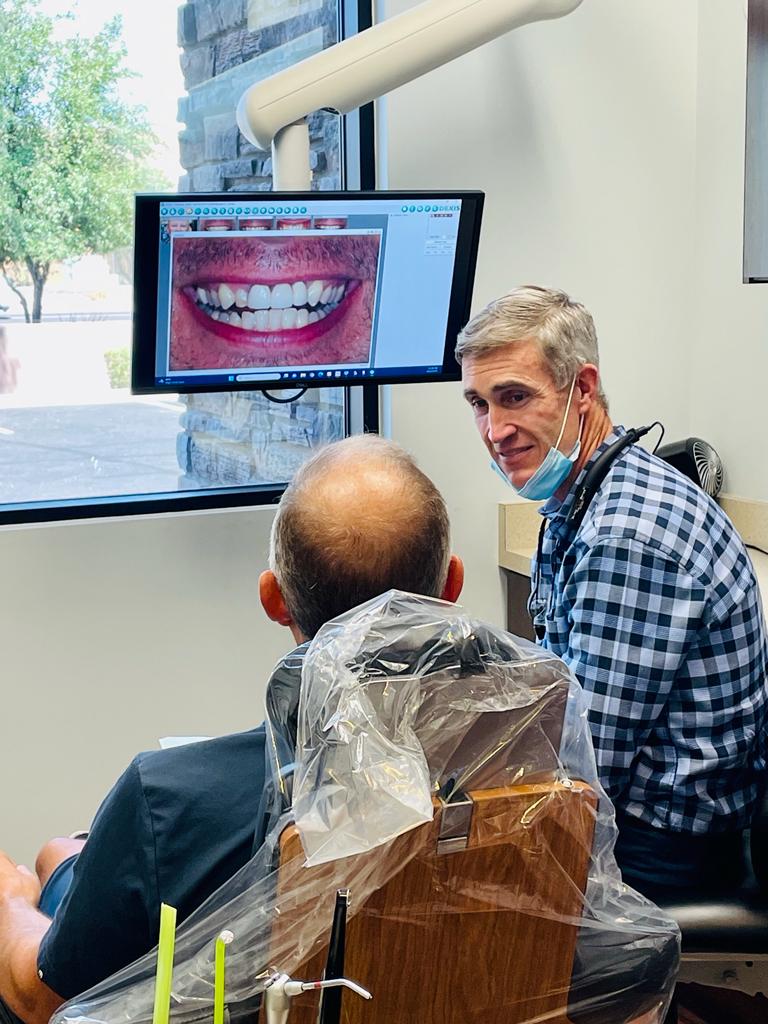
A Guide to Patient Education on Common Dental Procedures
For many, a visit to the dentist can be an intimidating experience, marked by the constant noise of dental equipment and the fear of discomfort, leading to anxiety. However, patient education plays a crucial role in dispelling these fears and empowering individuals to take charge of their dental health. At Tempe Family Dentistry, patient well-being is always a priority, ensuring a thorough understanding of various dental procedures.
This guide aims to illuminate the most common dental procedures, illustrating how gaining insights into these processes can transform you into a well-informed and confident patient.
Dental Cleanings and Check-Ups
Regular dental cleanings and check-ups are the foundation of oral health. These appointments typically occur every six months and are crucial for preventing and identifying issues early on. During a cleaning, a dental hygienist will remove plaque and tartar buildup from your teeth, reducing the risk of cavities and gum disease. The dentist will then conduct a thorough examination, looking for signs of oral health problems like cavities, gum disease, or oral cancer.
Understanding the importance of these routine appointments can motivate patients to prioritize their oral health. Patients should be aware that skipping these appointments can lead to more extensive and costly dental treatments.
Fillings
Dental fillings are one of the most common procedures performed by dentists. They are used to repair teeth damaged by cavities or decay. When a cavity is detected, the dentist will remove the decayed portion of the tooth and then fill the space with a dental material such as composite resin, amalgam, or porcelain.
Explaining the process to patients can alleviate their concerns. Letting them know that fillings are a routine and relatively painless procedure can help reduce anxiety. Moreover, educating patients about the importance of addressing cavities promptly can prevent more extensive treatments like root canals or extractions.
Root Canals
The mere mention of a root canal can send shivers down a patient’s spine. However, understanding this procedure can help alleviate fears. Root canals are performed to save a severely infected or damaged tooth. During the procedure, the dentist removes the infected pulp, cleans the tooth’s interior, and seals it to prevent further infection.
Patients should be educated on the signs that may necessitate a root canal, such as severe toothache, sensitivity to hot or cold, and gum swelling. Knowing that root canals can save teeth from extraction and alleviate pain can empower patients to make informed decisions about their treatment.
Tooth Extractions
Tooth extractions are necessary when a tooth is severely damaged, infected, or crowded. While many patients fear extractions, understanding the reasons behind this procedure can help them see its importance. Tooth extractions are performed to prevent the spread of infection, alleviate pain, or create space for orthodontic treatment.
Patients should be educated on the different types of extractions, such as simple extractions for visible teeth and surgical extractions for impacted or broken teeth. It’s crucial to reassure patients that modern dentistry has made extractions less painful and more comfortable than in the past.
Orthodontic Treatments
Orthodontic treatments, such as braces or clear aligners, are essential for achieving a straight and healthy smile. Patients should be educated about the benefits of orthodontics beyond aesthetics, such as improved oral function and reduced risk of dental problems like gum disease and cavities.
Explaining the process of orthodontic treatments, including the timeline and potential discomfort, can prepare patients for what to expect. Encourage patients to ask questions and voice concerns, which will help them feel more in control of their treatment.
Dental Implants
Dental implants are a revolutionary solution for replacing missing teeth. They offer both aesthetic and functional benefits. Implants consist of a titanium post surgically placed in the jawbone, providing a stable foundation for a crown or bridge.
Patient education on dental implants should include information on the advantages, such as improved chewing ability and prevention of bone loss. Patients should also know the procedure’s steps, from the initial consultation to the final restoration.
Teeth Whitening
Teeth whitening procedures are famous for enhancing the appearance of one’s smile. Educating patients about teeth whitening options, such as in-office treatments or take-home kits, can help them make an informed choice.
Highlight the safety and effectiveness of professional teeth whitening procedures performed by a dentist. Make patients aware of potential side effects like tooth sensitivity and how to manage them.
In conclusion, patient education is the key to empowering individuals to take control of their oral health. When patients understand common dental procedures, their fears and anxieties are reduced, and they are more likely to make informed decisions about their dental care. A well-informed patient is more confident and proactive in maintaining a healthy and beautiful smile. So, the next time you visit the dentist, remember that knowledge is the best tool for empowering smiles.
